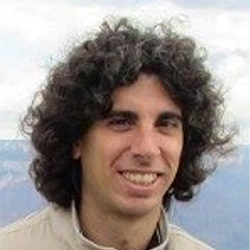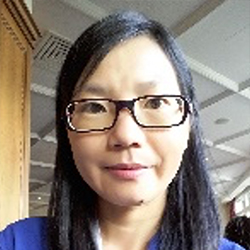Istituto Italiano di Tecnologia
Fondazione Istituto Italiano di Tecnologia (IIT) is a scientific research center established by law in 2003 by the Ministry of Education, University and Research and the Ministry of Economy and Finance to promote excellence in basic and applied research and facilitate economic development at the national level. IIT’s scientific activity began in 2006; it has a strong multidisciplinary focus and is characterized by a technology transfer approach. IIT’s staff consists of more than 1,900 people, most of whom (more than 80 percent) are dedicated to research, with a gender distribution of 42 percent women and 58 percent men and an average age of 35. About half of the researchers (51%) come from abroad: 33% are scientists from more than 60 foreign countries and 18% are Italian researchers who have returned to Italy after professional experience abroad. Research is carried out at the Central Research Laboratories in Genoa (IIT headquarters), 11 satellite research centers throughout Italy, and 2 outlying stations in the United States. IIT’s scientific vision is interdisciplinary, based on the concept of “translating evolution into technology,” that is, mimicking natural solutions to develop new technologies in the fields of robotics, materials science and life sciences. IIT is currently conducting its new science plan (2018-2023) by developing four strategic research domains: Robotics, Nanomaterials, Life Science Technologies, and Computational Sciences. IIT’s main goal is to produce technologies that have a positive impact on some major societal challenges, such as sustainability and the environment, health care and an aging society, also reflecting the priorities of the EU Framework Programs. This approach promotes the creation of joint laboratories and research agreements with industrial partners, universities and international research centers.
Canter for Sustainable Future Technologies
The “Center for Sustainable Future Technologies (CSFT)” mission is the development of cutting-edge technologies to achieve fast the ambitious targets set up in Paris (December 2015) by the COP21 assembly of 195 Countries to cope with the global warming effect. To deliver sustainability-compliant technologies the Center fosters alternate routes, which include the development of advanced materials for carbon capture and valorization, for hydrogen production, storage and utilization, and for energy storage, along with in-depth characterization of their properties at the structural, chemical, electrical, electrochemical and mechanical levels. The equally appealing approach pursued by the Center is based on the development of best-practice biology-based process technologies for carbon transformation into valuable specialty or everyday products, and for bio-fuel production. In this framework, the Advanced Materials for Sustainable Future Technologies line will be involved in ECOMATES developing new bimetallic materials for the CO2 electrocatalytic reduction.
Research Team
The group involved in ECOMATES is composed by three senior staff members beside some post-docs and PhD students. The team is expert in the growth and characterization of novel catalysts and, within ECOMATES, will host and supervise DC2. The senior researchers composing the team are:
 |
Candido Fabrizio Pirri, full professor in Physics of Matter and director of CSFT. Within ECOMATES, he is the scientist-in-charge for IIT.
|
 |
Adriano Sacco is senior post-doc and expert in the electrochemical characterization of materials, devices and processes. Within ECOMATES, he is the scientist-in-charge for IIT.
|
 |
Juqin Zeng is senior post-doc and has a proven experience in the synthesis and characterization of catalysts for electrochemical applications.
|
Infrastructure
The Center for Sustainable Future Technologies has developed in previous years several materials for CO2 conversion. Therefore, its facilities, capabilities and lab equipment are suitable for the proposed tasks regarding the synthesis and electrochemical characterization of catalysts: different furnaces, microwave reactors, TGA-IR, UV-Vis, XRD, Raman, BET, transmission and scanning electron microscopes, potentiostats, micro-gas chromatographs, gas chromatograph–mass spectrometer, multi-reactor system.

